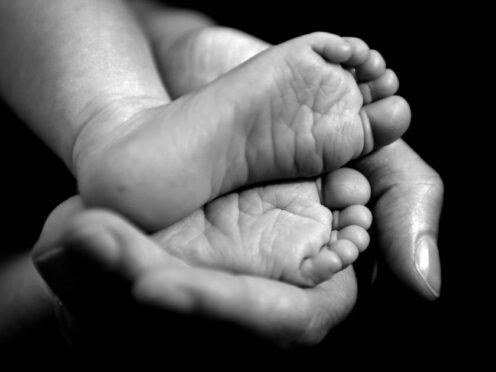Improvements are needed in examinations of baby deaths in Scotland, a review examining rises has found.
The Scottish Government commissioned Healthcare Improvement Scotland to hold the review after a higher than expected number of deaths in March 2022 and September 2021.
The review covered reported neonatal deaths – those within 28 days of birth – across Scotland between April 1 2021 and March 31 2022.
There were 135 neonatal deaths during this period, with the review finding an estimated 30 additional deaths in 2021-22 compared to the previous four years.
The review did not find evidence of systemic failures of maternity or neonatal care or “unusual factors” that would explain the increase.
The examined data suggested a possible higher rate of labour and delivery problems but this would not fully explain the increase, the review found.
One factor was more babies than expected being born before 28 weeks in 2021-22, as these babies have a higher neonatal mortality rate.
There was also a “significant increase” in the neonatal mortality rate for babies born at 32-36 weeks in 2021-22.
A total of 10 of the 25 babies born at 32-36 weeks had a congenital condition incompatible with survival and a further three had either a major congenital or genetic condition which contributed to their death.
However, data provided meant the review panel was “unable to determine if this reflected a change in the incidence of congenital conditions, or a change in the management of babies affected by major congenital conditions”.
The review panel found evidence of “poor quality, inconsistent and incomplete local reviews across NHS boards” which limited the conclusions they could reach.
Among its recommendations, the review called for earlier and more comprehensive reviews of neonatal deaths to ensure potential issues are identified in time, as well as greater collaboration across NHS boards and national organisations.
Dr Helen Mactier, the retired consultant neonatologist who chaired the review, said: “The death of a baby is a devastating and traumatic experience for parents and families.
“Although increasingly small and sick babies now survive, there will be some babies for whom this is not the case. This does not necessarily reflect any shortcomings in care.
“However, it is important to acknowledge that some deaths may have been preventable. To prevent as many baby deaths as possible, review of both maternity and neonatal care is an essential part of midwifery, obstetric and neonatal practice.
“This review has helped to get a clearer understanding of the increase in neonatal deaths that occurred in 2021-22.
“We understand that there are still unanswered questions, and our recommendations are focused on ensuring that future opportunities to learn are not missed, and acted on in a timely and comprehensive manner.”
In 2022-23, the neonatal mortality rate in Scotland returned to that observed between 2015 and 2020 but provisional data from January to September last year suggests a return to higher neonatal mortality rates.
Scottish Liberal Democrat leader Alex Cole-Hamilton said: “It’s clear that there is scope for improvement in the current system, which includes conducting more detailed reviews ahead of time and ensuring greater coordination between health boards.
“I hope that ministers will waste no time in taking forward these recommendations. To prevent baby deaths, it is vital that the government take urgent steps to lay down learning for the future.”
Director of bereavement support at stillbirth and neonatal death charity Sands, Jen Coates, said: “Today’s report from Healthcare Improvement Scotland, into the national increase in neonatal deaths, may be a difficult time, particularly for all those families whose babies died between April 1 2021 and March 31 2022 and which this report focuses on.
“We know that reports like this can also be worrying for anyone in Scotland who is pregnant now. We want all these families to know that Sands is here for them and for anyone in Scotland who has been affected by the death of a baby.”
Public and women’s health minister, Jenni Minto, welcomed the report and accepted the recommendation.
She said: “The review was commissioned so that we could better understand what may have caused the increase in neonatal mortality and to find ways that we can improve learning and future care.
“The findings made will now be considered carefully and we will work with Healthcare Improvement Scotland and other NHS partners on the next steps.”
She said the Government recognises the tragedy of losing a baby and encouraged anyone in need of support to contact Sands or a similar service.
